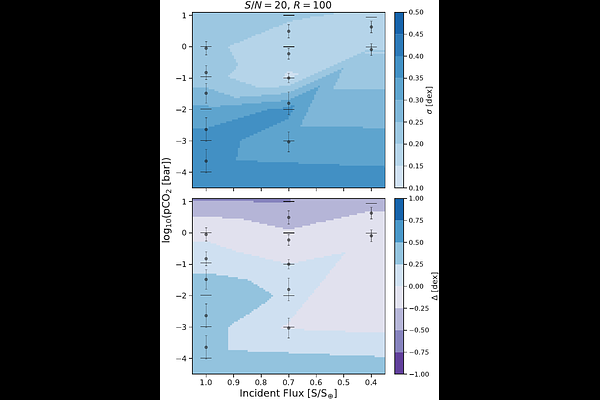Detecting Atmospheric CO2 Trends as Population-Level Signatures for Long-Term Stable Water Oceans and Biotic Activity on Temperate Terrestrial Exoplanets

Detecting Atmospheric CO2 Trends as Population-Level Signatures for Long-Term Stable Water Oceans and Biotic Activity on Temperate Terrestrial Exoplanets
Janina Hansen, Daniel Angerhausen, Sascha P. Quanz, Derek Vance, Björn S. Konrad, Emily O. Garvin, Eleonora Alei, Jens Kammerer, Felix A. Dannert
AbstractIdentifying key observables is essential for enhancing our knowledge of exoplanet habitability and biospheres, as well as improving future mission capabilities. While currently challenging, future observatories such as the Large Interferometer for Exoplanets (LIFE) will enable atmospheric observations of a diverse sample of temperate terrestrial worlds. Using thermal emission spectra that represent conventional predictions of atmospheric CO2 variability across the Habitable Zone (HZ), we assess the ability of the LIFE mission - as a specific concept for a future space-based interferometer - to detect CO2 trends indicative of the carbonate-silicate (Cb-Si) weathering feedback, a well-known habitability marker and potential biological tracer. Therefore, we explore the feasibility of differentiating between CO2 trends in biotic and abiotic planet populations. We create synthetic exoplanet populations based on geochemistry-climate predictions and perform retrievals on simulated thermal emission observations. The results demonstrate the robust detection of population-level CO2 trends in both biotic and abiotic scenarios for population sizes as small as 30 Exo-Earth Candidates (EECs) and the lowest assessed spectrum quality in terms of signal-to-noise ratio, S/N = 10, and spectral resolution, R = 50. However, biased CO2 partial pressure constraints hinder accurate differentiation between biotic and abiotic trends. If these biases were corrected, accurate differentiation could be achieved for populations with $\geq$ 100 EECs. We conclude that LIFE can effectively enable population-level characterization of temperate terrestrial atmospheres and detect Cb-Si cycle driven CO2 trends as habitability indicators. Nevertheless, the identified biases underscore the importance of testing atmospheric characterization performance against the broad diversity expected for planetary populations.